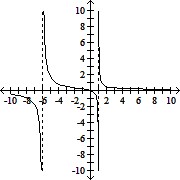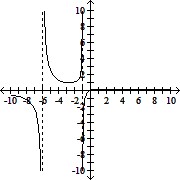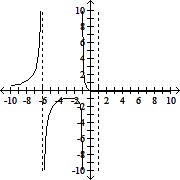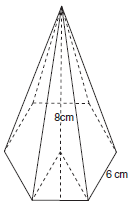Graph the function, showing all asymptotes (those that do not correspond to an axis) as dashed lines. List the x- and y-intercepts.f(x) = 

A. x-intercept: (0, 0) , y-intercept: (0, 0) ;
B. x-intercept: (0, 0) , y-intercept: (0, 0) ;
C. x-intercept: (0, 0) , y-intercept: (0, 0) ;
D. x-intercept: (0, 0) , y-intercept: (0, 0) ;
Answer: C
You might also like to view...
Determine if the series converges or diverges. If the series converges, find its sum.
A. converges; 
B. converges; 3
C. converges; 1
D. converges; 
Find the indicated series by the given operation.Show that by integrating term by term the expansion of -  , the result is the expansion for
, the result is the expansion for 
A.  = -x2 +
= -x2 +  x4 -
x4 -  x6 +
x6 +  x8 - . . .
x8 - . . .
B.  = -x2 -
= -x2 -  x4 -
x4 -  x6 -
x6 -  x8 - . . .
x8 - . . .
C.  = x2 -
= x2 -  x4 +
x4 +  x6 -
x6 -  x8 + . . .
x8 + . . .
D.  = x2 +
= x2 +  x4 +
x4 +  x6 +
x6 +  x8 + . . .
x8 + . . .
Provide an appropriate response.Use the change-of-base formulas to find: log4 219 Round to thousandths.
Fill in the blank(s) with the appropriate word(s).
The following right regular hexagonal pyramid has an edge length of 6 cm on the hexagonal base and the height of the pyramid is 8 cm.

(a) What is the surface area of the pyramid?
(b) What is the volume of the pyramid?